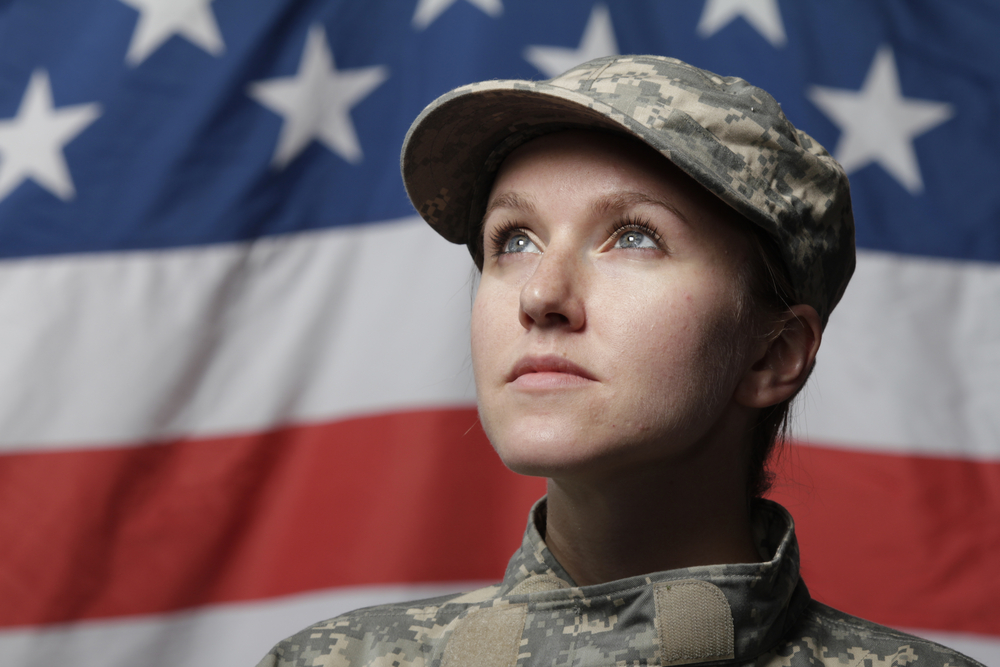Veterans, Brain Injury, and Vision

By Gregory L. Goodrich, Ph.D.
The History of Blindness/ Low Vision Due to Brain Injury
Blindness/ low vision due to brain injury undoubtedly dates back to the earliest history of our species. One can easily picture a fight between two early homo sapiens, with one hitting the other on the head with a rock or club. If the fight didn’t kill the injured party, there was a reasonably good chance that the injured party would have double vision, difficulty visually tracking a moving object, and/or have a large part of their visual field missing. A substantial percentage of the brain is involved in vision and visual processing, so any injury to the brain has a good chance of impacting vision.
Effect of the Wars in Afghanistan and Iraq on Awareness of Traumatic Brain Injuries and Blindness
It can be argued that despite the ancient history of blindness/ low vision due to brain injury, the wars in Afghanistan and Iraq highlighted that head injury often leads to blindness/ low vision and/or visual dysfunctions. These wars have resulted in over 253,000 traumatic brain injuries (TBI)I. How many of these TBIs resulted in blindness or dysfunction is not known. Kevin Frickeii has estimated that between 2000 and 2011, over 54,000 U.S. troops experienced an eye injury or visual changes/dysfunction. He estimated the direct medical cost for these troops to be 2.82 billion dollars. The projected cost to the economy over the lifetime of these individuals, including rehabilitation, lost wages, and other costs, is estimated to be an additional $24.286 billion.
Civilian TBI-Related Blindness
While the number of U.S. troops with blindness/ low vision due to combat injuries is significant, their numbers pale compared to civilian TBI-related vision changes. Each year some 1.7 civilians incur a TBI.iii Most of these cases are mild TBI, with about 25% rated as moderate or severe. However, even the so-called “mild” TBIs can negatively impact visual function. We don’t know how many TBIs result in blindness/ low vision or visual dysfunction. Generally accepted estimates range from 20% to 40%, but some are higher. The most conservative estimate (20%) suggests at least 340,000 TBIs each year that result in vision changes/dysfunction.
Types of Visual Dysfunction Caused by TBI
The most common visual consequence of TBI is visual dysfunction. These dysfunctions include deficits in accommodation, convergence, saccades, pursuits, and others, and the consequence of these dysfunctions can be dramatic. Impaired reading or the ability to read for only short periods is common. In more extreme cases, the ability to drive safely may be impaired. Thus these dysfunctions affect a person’s ability to do everyday activities and may interfere with education, work, and even social life.
Visual Acuity and TBI
Interestingly, visual acuity following a TBI is not often affected, and it is one reason the visual consequences of TBI are often overlooked. After all, if you have 20/20 acuity, what could be wrong? In addition to the binocular/oculomotor dysfunctions mentioned above, the person might have lost half their visual field or a quarter, or their fields may be constricted. In such cases, the person may bump into things and, surprisingly, they often don’t realize that a significant portion of their visual field is missing. Knowing they sustained a TBI, the person might think, “I’m clumsy” or “It’s my brain injury that causes this.”
As we celebrate the commitment and sacrifices of our men and women veterans, let’s keep in mind that all too many have returned home with a brain injury and resulting visual problems. Eye care professionals can help by inquiring about their patients, whether or not they are veterans, and whether or not they experienced a TBI. If so, specific eye examination techniques should be provided, and referrals made as needed.
How Family and Friends Can Help
Family and friends can help if a veteran has difficulty with reading or other visual tasks by encouraging the veteran to have a comprehensive eye examination. While brain injuries can’t be reversed, the visual consequences can be effectively addressed. If we do this with veterans, we’ll raise the general awareness of vision changes and dysfunction following TBI and improve care for civilians and veterans. It is a truism that war leads to dramatic improvements in medicine. We can make this true for TBI-related vision changes as well.
i. http://www.health.mil/Research/TBI_Numbers.aspx accessed October 31, 2012
ii. K. Fricke (2012). Costs of Military Eye Injury, Vision Impairment, and Related Blindness and Vision Dysfunction Associated with Traumatic Brain Injury (TBI) without Eye Injury. Report prepared for the National Alliance for Eye and Vision Research.
iii. http://www.cdc.gov/traumaticbraininjury/statistics.html
iv. Gianutsons, R., Visual Rehabilitation following acquired brain injury, AOTO, 1997